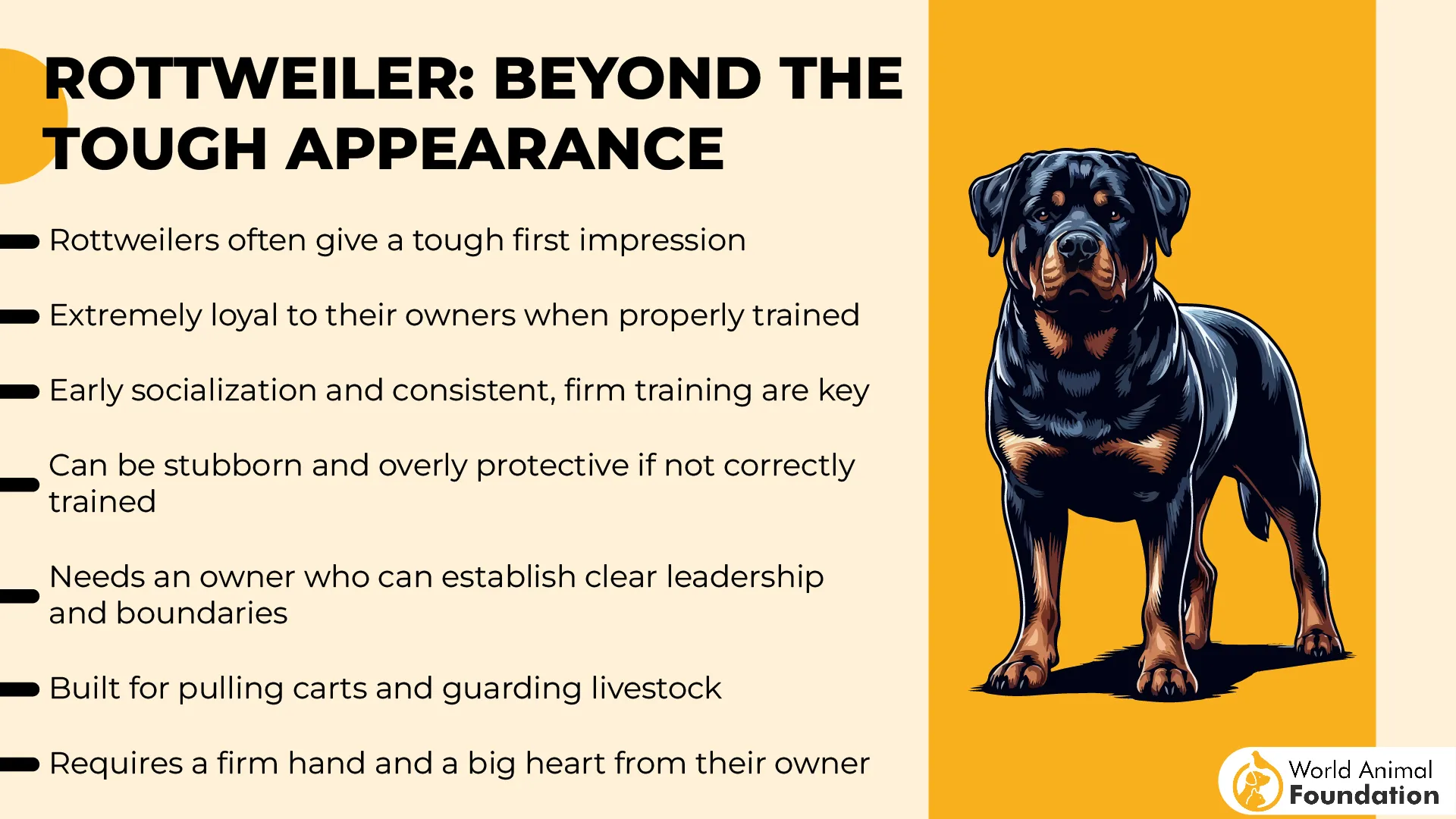In the wide and wonderful world of dogs, one thing is almost universally true: most pups adore their treats. But while many enjoy a snack or two, certain breeds take their love for food to an entirely different level. These food-motivated dogs have an unwavering enthusiasm for anything edible, making them not only eager eaters but also some of the most trainable companions around.
This strong drive for food isn’t just a cute quirk, it often reflects deeper traits rooted in their history and evolution. Whether bred as vigilant working dogs dependent on meals from their handlers or high-energy herders rewarded with hearty feasts, their appetite has always been a key part of their role. In many cases, this craving has contributed to the formation of tight bonds with humans, fueled by positive reinforcement and shared resources.
In this article, we highlight the top food-motivated puppy breeds, those who will sit, stay, and even dance for a bite. While their snack obsession can sometimes lead to overeating if not managed, it also offers a valuable training advantage for pet owners who know how to harness it wisely.
Food-Motivated Puppy Dog Breeds
1. Labrador Retriever

When it comes to food-motivated puppy breeds, Labrador Retrievers top the list with ease. Their boundless appetite is more than just a personality trait; it’s written into their DNA. VCA Hospitals explains that Labradors are often born with a mutation in the POMC gene, which plays a critical role in appetite regulation.
This rare genetic quirk means their brain never quite gets the message that they’re full, making Labs especially prone to treat obsession. Their famously friendly nature? Often a strategic tool in the quest for snacks.
Training
This insatiable love for food, while comical at times, actually makes this food-obsessed breed one of the easiest breeds to train. Their eagerness to earn treats can be harnessed into positive reinforcement, making obedience and trick training highly effective.
Starting early is key; puppy training classes and consistent exposure to new environments between 7 weeks and 4 months are essential to shaping well-rounded adult dogs. Pet parents should stay mindful, however, as this same food drive can also lead to bad habits like excessive begging or sneaky snacking.
With clear boundaries and structured training, Labs can channel their culinary motivation into becoming loyal, well-mannered family members.
Did you know? Labrador Retrievers carry a unique POMC gene mutation that disrupts appetite control, making them biologically driven to crave food.
2. Beagle

Beagle is not just a skilled hunting dog and devoted companions, they also have a cheerful, humorous nature and a charmingly expressive face that adds to their cuteness. Bred to hunt in packs, Beagles typically enjoy being around others and tend to have a friendly, laid-back temperament.
Beagles have long held a reputation for their boundless appetite, making them a standout among food-motivated puppy breeds. According to the AKC, historically bred as rabbit hunters, their strong desire for food served as a powerful motivator during long days in the field.
Today, that same trait is evident in their daily behavior, whether it’s raiding the trash, sniffing out snacks, or begging with those soulful eyes. Without careful supervision, a Beagle may overindulge to the point of illness.
Training
Thanks to their food obsession and sharp scenting abilities, Beagles are highly trainable, especially with a treat in hand. They respond best to gentle, positive reinforcement rather than harsh correction. Early socialization and structured puppy training classes help channel their energy and enthusiasm into good behavior.
Creative approaches and consistency are key, as Beagles are clever and determined problem-solvers. Their food-driven nature makes them excellent candidates for scent detection work, but it also means owners must set firm boundaries to prevent overeating or mischief.
Did you know? Beagles are so food-focused that they’ve been known to eat themselves sick if their access to meals isn’t carefully managed.
3. Pug

Few breeds use charm as effectively as the Pug when it comes to scoring a snack. With their expressive eyes, wrinkled brows, and comical antics, Pugs are masters at convincing humans to hand over a treat or two. Their royal lineage as pampered companions in ancient China and later European courts may have set the stage for their love of indulgence.
However, this breed’s deep affection for food can quickly lead to trouble, as their compact frames and brachycephalic features make them especially prone to obesity and related health issues.
Training
This food enthusiasm can be a powerful asset when training a Pug. These dogs respond exceptionally well to treats as motivation, making them quick learners for basic commands and tricks. Still, consistency is vital. Overindulgence or reinforcing begging behaviors can turn mealtime into a battleground.
Owners should establish clear boundaries and avoid sharing food from the table to discourage bad habits. Training sessions should be balanced with a vet-approved, portion-controlled diet to prevent weight gain. For Pugs with food sensitivities, a specialized feeding plan may also be needed to manage skin or allergy issues.

Did you know? Pugs’ love of food, combined with low energy needs, makes them one of the most obesity-prone breeds.
4. Dachshund

Dachshunds are intelligent dogs, but their strong-willed and independent nature can make training them somewhat difficult. Among the most food-motivated puppy breeds, Dachshunds rank high thanks to their unwavering determination and clever nature. Originally bred to hunt badgers, these small yet spirited dogs needed a high-energy diet to fuel their endurance in the field.
Today, that same drive has shifted to a passion for treats, making them both charming and relentless in their quest for food. PetMD warns that don’t be fooled by their short legs, Dachshunds will use all their cunning to snag a snack, often locking eyes with their humans until a treat magically appears.
Training
This food obsession, especially snacks, works to your advantage when it comes to training. These food-obsessed dogs are intelligent and thrive on mentally stimulating activities like scent-tracking games or puzzle feeders. They respond enthusiastically to food-based rewards, making positive reinforcement techniques highly effective.
However, owners should be mindful of the breed’s susceptibility to back issues and obesity. Regular but low-impact exercise, such as multiple short walks and supervised play, is key to maintaining a healthy weight and supporting their long spines. Pairing smart feeding routines with reward-based training can help channel their energy in productive and health-conscious ways.
Did you know? Dachshunds are such persistent food lovers that they’re known to use intense eye contact to charm their way into extra treats.
5. French Bulldog

French Bulldogs, often called Frenchies, are compact in size but full of personality. Recognized for their distinctive large ears, they adapt easily to various living environments, which contributes to their popularity as pets. With their charming expressions and signature bat ears, French Bulldogs may look like little comedians, but when it comes to food, they take things very seriously.
Despite their petite frame, Frenchies are surprisingly food-driven, often begging with dramatic flair for just one more bite. Their love for treats is rooted in their affectionate nature, seeing mealtimes as moments to bond with their beloved humans. However, their sedentary lifestyle and tendency to gain weight mean their food intake must be monitored carefully to avoid health complications.
Training
Their strong desire for food can be a major asset in training, especially when paired with their natural eagerness to please. French Bulldogs thrive on positive, reward-based methods, making treats an effective motivator; just be mindful of portion control. Starting early with consistent training and clear household boundaries is key, especially since Frenchies can be a bit headstrong if spoiled.
Socialization should also begin at a young age to help shape their naturally friendly temperament into well-rounded adult behavior. Accredited training classes are especially useful for first-time pet parents, offering structure and support.
Did you know? French Bulldogs can easily gain weight, which can worsen their breathing issues due to their flat-faced anatomy, making a balanced diet crucial.
6. Rottweiler

Though celebrated for their guarding instincts and powerful physique, Rottweilers are also well-known among food-motivated puppy breeds. With a heritage rooted in hard labor, herding livestock, and pulling meat carts, these dogs developed a strong appetite to sustain their energy needs.
Today, their deep appreciation for food remains, making them both enthusiastic eaters and highly responsive to treat-based reinforcement. Their love of meals, however, must be balanced with appropriate activity to avoid unnecessary weight gain.
Training
Food is a powerful motivator for Rottweilers, helping turn their natural intelligence and eagerness to please into training strengths. Early and consistent training is vital for this large, strong-willed breed. Socialization and structured obedience classes from puppyhood ensure their confident temperament is channeled into positive behaviors.

Because they are people-oriented and crave inclusion in daily life, Rottweilers respond best to firm yet fair guidance, reinforced with rewards. They excel in canine sports and thrive when their minds and bodies are both kept active, especially when there’s a snack involved.
Did you know? Rottweilers once pulled meat carts to market, a job that helped shape both their strength and their enduring love for food.
7. Golden Retriever

Golden Retrievers are a classic example of food-motivated puppy breeds, blending their outgoing, eager-to-please temperament with a deep appreciation for treats. Originally bred in 19th-century Scotland to retrieve game birds for hunters, their boundless energy and joyful demeanor are matched by a hearty appetite.
This natural love for food makes them especially responsive to positive reinforcement, but also means they can be prone to overindulgence if feeding isn’t carefully managed.
Training
With their sociable nature and willingness to work, Golden Retrievers are often enthusiastic learners, especially when tasty rewards are involved. Their strong food drive makes them ideal candidates for obedience training, agility exercises, and field work like retrieving or tracking. However, they can be easily distracted as puppies, so early training should balance motivation with structure.
A fenced yard is essential for off-leash time, and mental stimulation is a must to keep them engaged. While they thrive on interaction, it’s their connection between effort and reward, usually food, that makes training especially effective.
Did you know? This dog breed excels in competitive obedience and field trials, thanks in part to their high intelligence and love for food-driven learning.
Conclusion
When it comes to training and bonding, few things motivate a pup quite like the promise of a tasty treat. As we’ve seen with breeds like the Labrador Retriever and Golden Retriever, a healthy appetite can be both a blessing and a challenge. These food-loving breeds are quick learners when snacks are involved, but their eagerness for a bite requires owners to stay mindful of their dogs’ diet and overall health. Without careful portion control, even a small indulgence can have a lasting impact on a dog’s weight.
This pattern isn’t unique to just a few breeds, many dogs display this trait, though some, like the Cavalier King Charles Spaniel, are particularly known for their charming “puppy dog eyes” and relentless pursuit of food. Whether it’s begging at the dinner table or scavenging during walks, a dog’s appetite often drives both their behavior and their training potential.
While these breeds may differ in size, temperament, and history, their shared enthusiasm for food unites them with countless other dogs around the world. By recognizing and managing this motivation, pet owners can use it to their advantage, turning snack time into a tool for positive development while keeping their furry friend’s health in check.


